| |
|
|
| Cennet ve Cehennem
in Cilicia |
 |
|

 |
| |
|
|
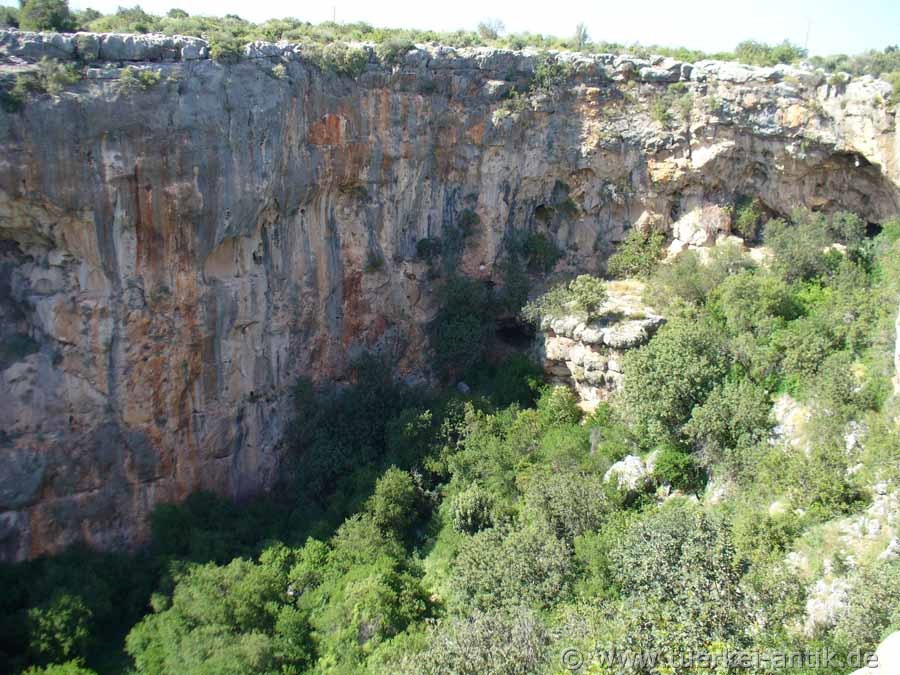 |
|
|
| View into Cennet
(Heaven) |
|
| |
|
|
The Coryk Caves, Turkish: Cennet ve Cehennem (Heaven and Hell) owes its existence to an underground river that also flows underground into the Mediterranean near Narlikuyu. It formed a cave system in the karst, the ceiling of which collapsed at some point and thus formed the two dolines. |
|
| |
|
|
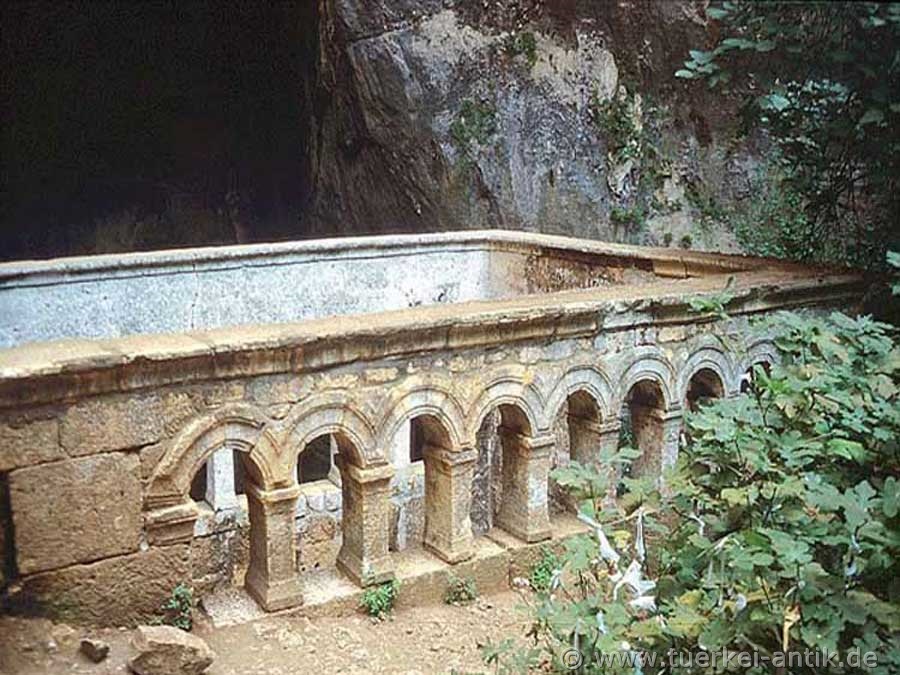 |
|
| The chapel of the Virgin Mary from the 5th century A.D. |
|
| |
|
|
Heaven (Cennet)
The southern, larger of the two caves, Cennet, consists of a cauldron about 100 m wide and 200 m long. It is more than 100 m deep and over 290 steps to walk on. The ground is rich in vegetation. At the end of the descent you will find the remains of a small chapel of the Virgin Mary from the fifth century. The outer walls are preserved, the lintel shows an Armenian inscription. Behind it begins the actual cave, called the Typhon Cave, which in ancient times was also regarded as the entrance to the underworld. A further descent is possible over smooth stones, after another 250 m the noise of the underground river course can be heard. |
|
| |
|
|
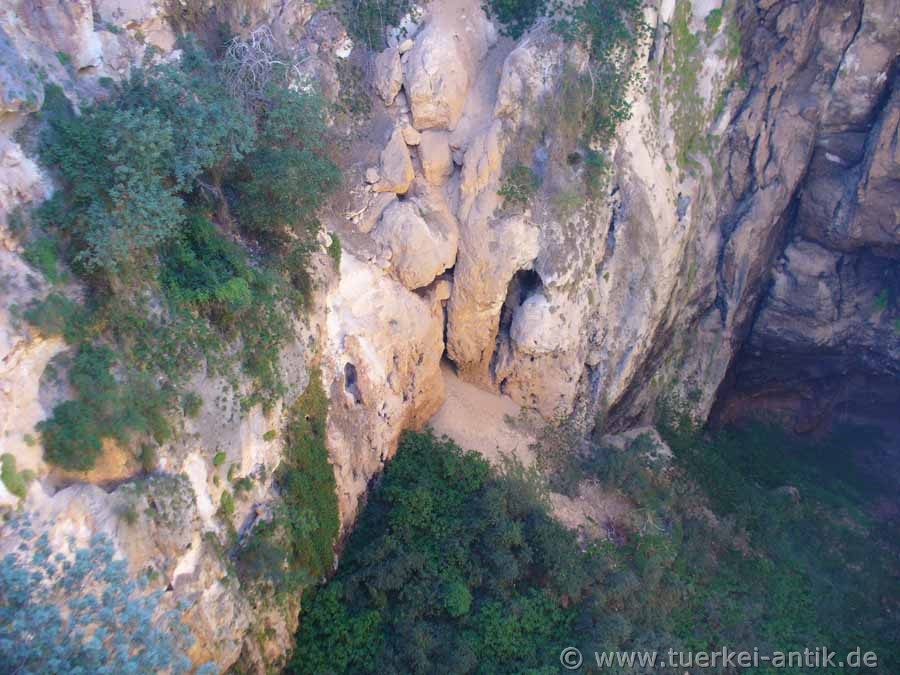 |
|
| Cehennem, the Hell |
|
| |
|
|
Hell
(Cehennem)
100 m further north lies Cehennem, a 128 m deep, almost round boiler with a diameter of about 50 m. It is not accessible due to the vertical, partially overhanging walls; woodland can be seen on the ground. The allegedly oxygen-poor or even poisonous air in the depth is said to have already led to fatalities during ascent attempts. |
|
| |
|
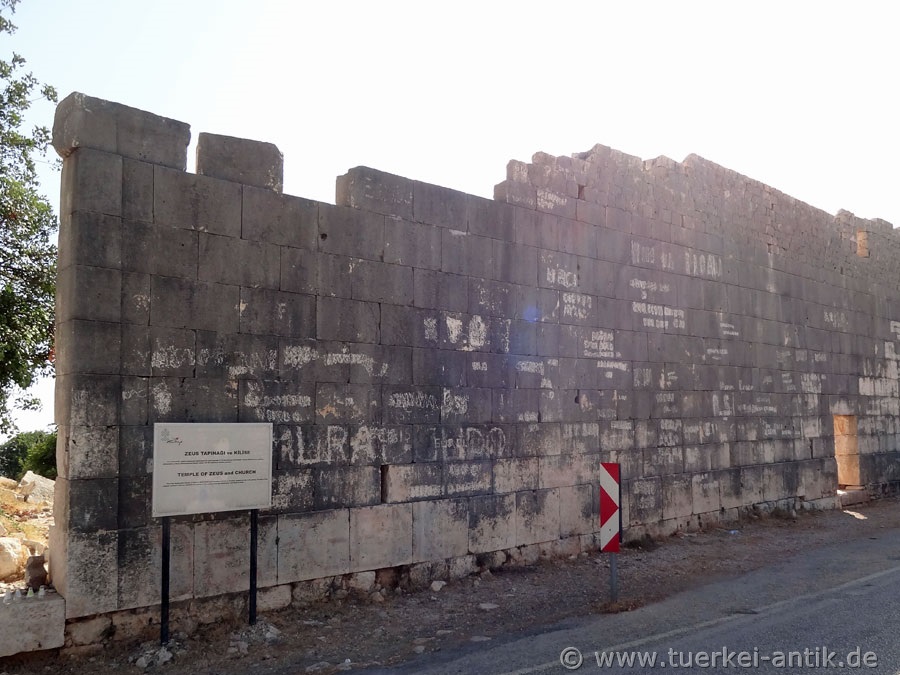 |
|
| The Temple of Zeus |
|
|
|
|
|
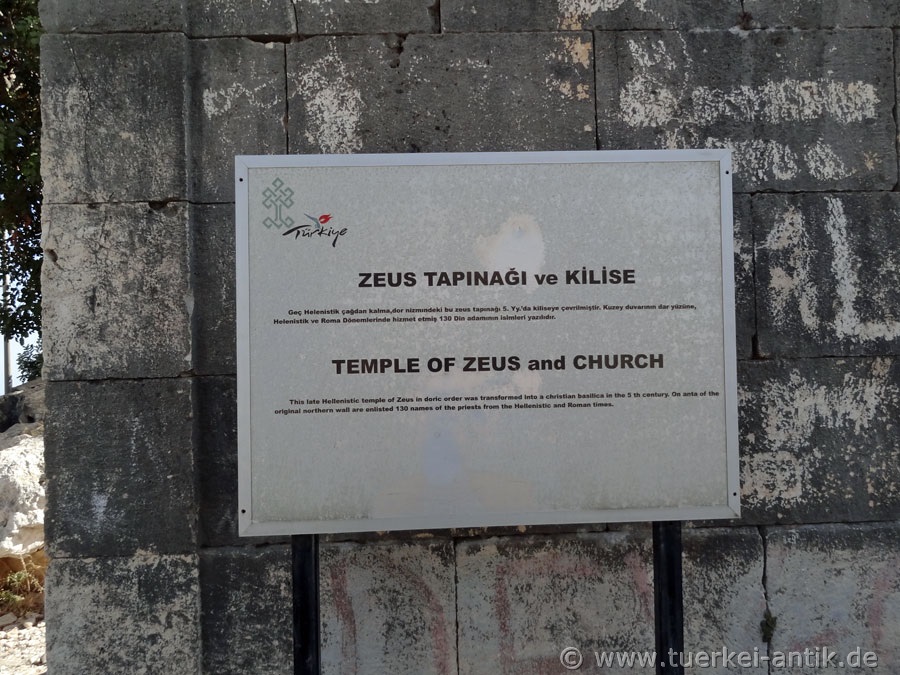 |
|
|
|
|
|
The Temple of
Zeus
At the upper edge of the Cennet are the remains of a sanctuary of Zeus Olbio or Zeus Korykios from the third century B.C., which was converted into a basilica in the fifth century. It originally belonged to the ancient Paperon, of which there are no other relics.
130 names of Hellenistic and Roman priests, among them Archelaius, son of Archelai, are written on the smooth ashlars of the northern wall. According to Serra Durugönül, the father is Archelaos I of Cappadocia, to whom parts of Cilicia and the priesthood were transferred after 25 BC by Augustus. Thus the priests are approximately datable, since a respective term of office of one year can be assumed.
To the west of it are the remains of a polygonal wall, the enclosure wall of the inner temple district. In the 4th or 5th century the temple was converted into a Christian basilica using large parts of the original masonry. |
|
| |
|
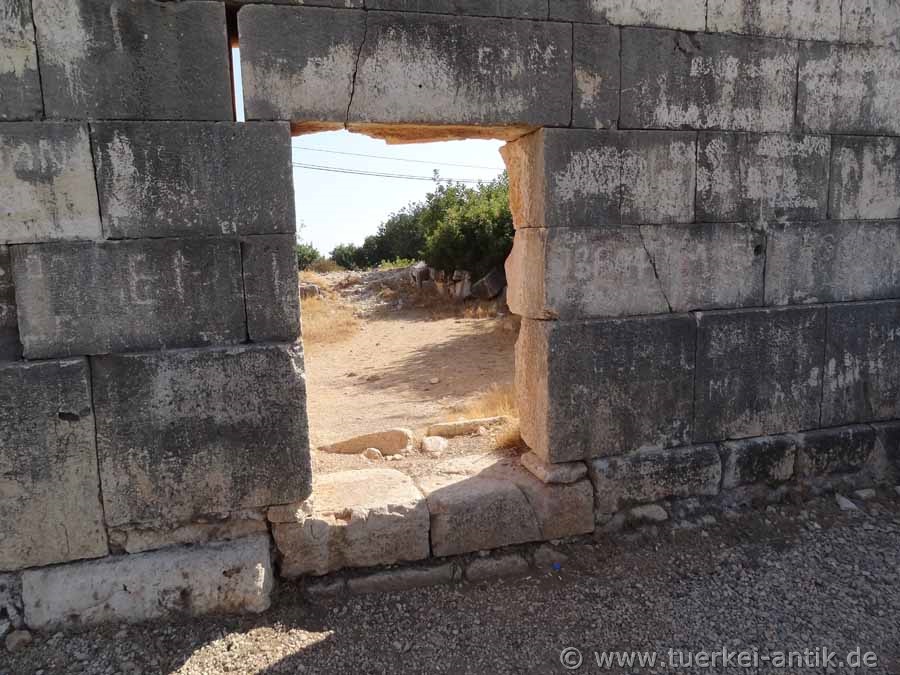 |
|
| former side door of the temple |
|
| |
|
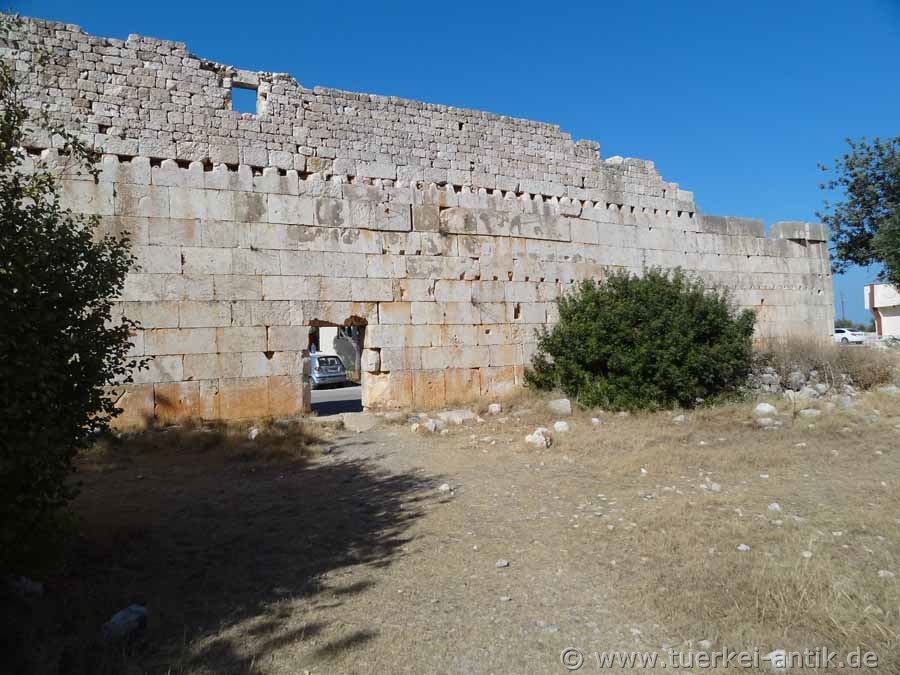 |
|
| behind the temple facade |
|
| |
|
|
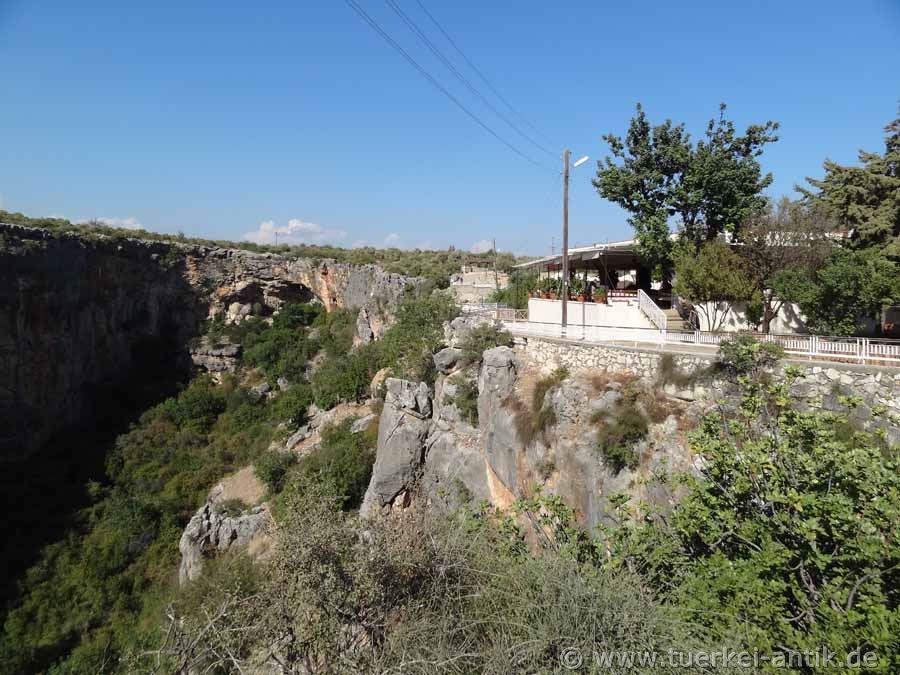 |
|
| Restaurant at the Cennet |
|
|
|
|
|
According to Greek mythology, the Corycian caves were the residence of the monster Typhon. To avenge Zeus for the defeat of the Titans, Gaia united with Tartaros and gave birth to the Typhon, a monster with a human torso, whose abdomen consisted of many snake bodies, with a hundred snake-headed arms. In the fight with Zeus Typhon cut out his sinews and robbed him of his lightning. He hid Zeus in the Corycian cave, where Hermes found him and put the stolen tendons back in. In the possession of his lightning, Zeus finally defeated the Typhon on Thracian Mount Haimon and finally buried him under the island of Sicily. There, the poisonous breath of fire of Typhon still emerges today through the gorge of Etna. |
|
| |
|
|
| |
|
|
| Photos: @chim |
|
|
| Translation aid:
www.DeepL.com/Translator |
|
|
| Source: Wikipedia and others |
|
|
|
 |





